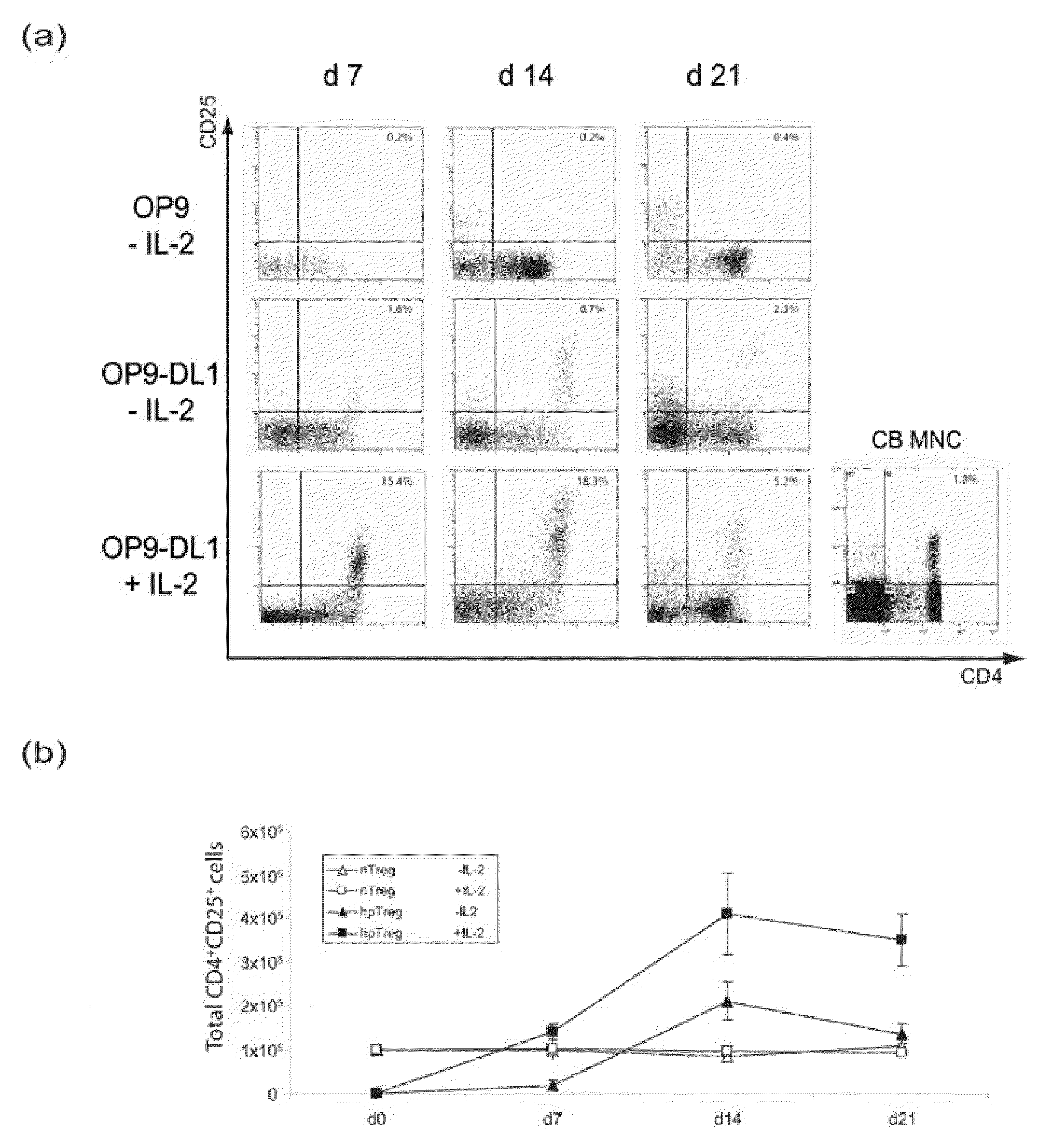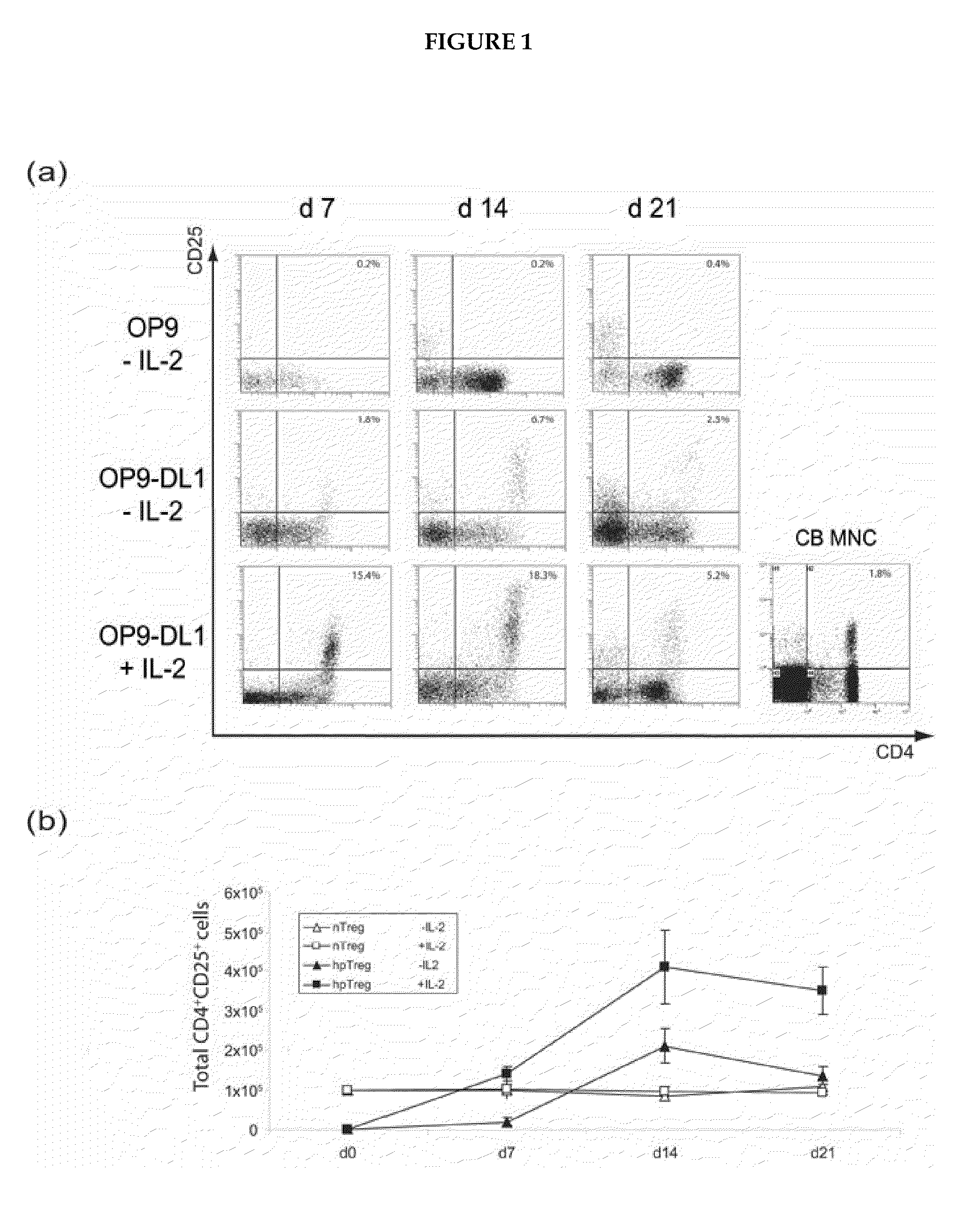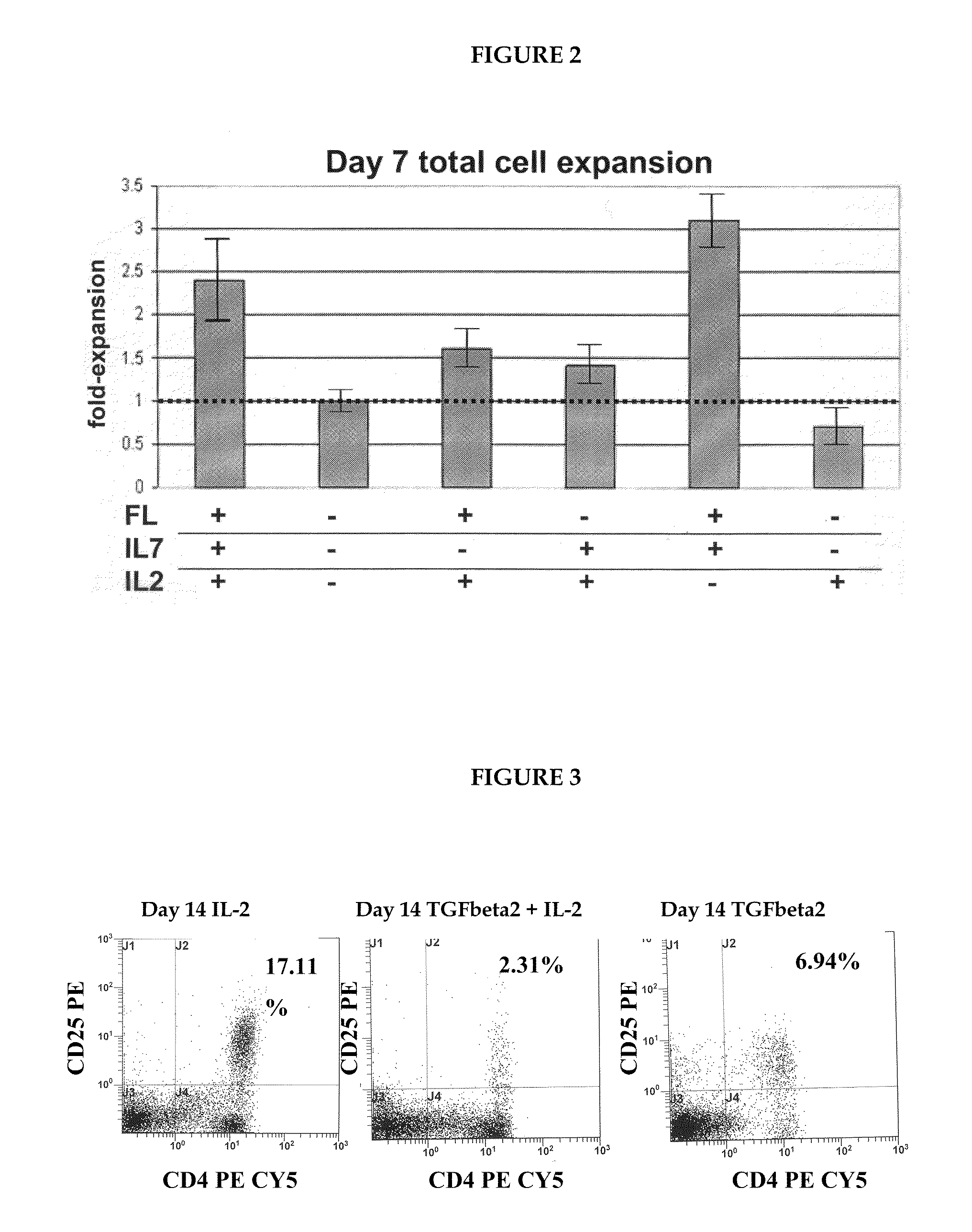Method for obtaining treg-cells
a technology of treg cells and treg cells, which is applied in the field of obtaining t regulatory (treg) cells, can solve the problems of considerable difficulty in successfully generating lymphocyte lineages
- Summary
- Abstract
- Description
- Claims
- Application Information
AI Technical Summary
Benefits of technology
Problems solved by technology
Method used
Image
Examples
example 1
Methods and Materials
Primary Cells and Cell Lines
Fresh primary human cord blood was obtained from volunteer donors. Mononuclear cells (MNC) were isolated by density gradient centrifugation over Lymphoprep™ solution (Axis-Shield, Oslo, Norway) and purified for CD34+ cells using magnetically activated cell sorting (MACS) with a Direct CD34 Progenitor Cell Isolation Kit and LS Separation Columns (Miltenyi Biotech, Auburn, Calif., United States of America).
An OP9 feeder cell line expressing DL1, designated OP9-DL1 (Schmitt, T. M. and J. C. Zuniga-Pflucker, 2002), was generated by infecting OP9 cells with a retroviral expression vector, pRUFpuro (Jenkins, B. J. et al., 1995), comprising a human DL1 gene, using standard methods.
HSC / OP9-DL1 Co-Cultures
OP9-DL1 cells were prepared 16 hours prior to initiating co-cultures. The cells were seeded at 2×104 cell / ml in 4 ml α-MEM media (Sigma-Aldrich Co., St Louis, Mo., United States of America) supplemented with 20% foetal calf serum (FCS) in 6 w...
PUM
| Property | Measurement | Unit |
|---|---|---|
| concentration | aaaaa | aaaaa |
| concentration | aaaaa | aaaaa |
| concentrations | aaaaa | aaaaa |
Abstract
Description
Claims
Application Information
 Login to View More
Login to View More - R&D
- Intellectual Property
- Life Sciences
- Materials
- Tech Scout
- Unparalleled Data Quality
- Higher Quality Content
- 60% Fewer Hallucinations
Browse by: Latest US Patents, China's latest patents, Technical Efficacy Thesaurus, Application Domain, Technology Topic, Popular Technical Reports.
© 2025 PatSnap. All rights reserved.Legal|Privacy policy|Modern Slavery Act Transparency Statement|Sitemap|About US| Contact US: help@patsnap.com



